How AI Apps Predict Garden Diseases
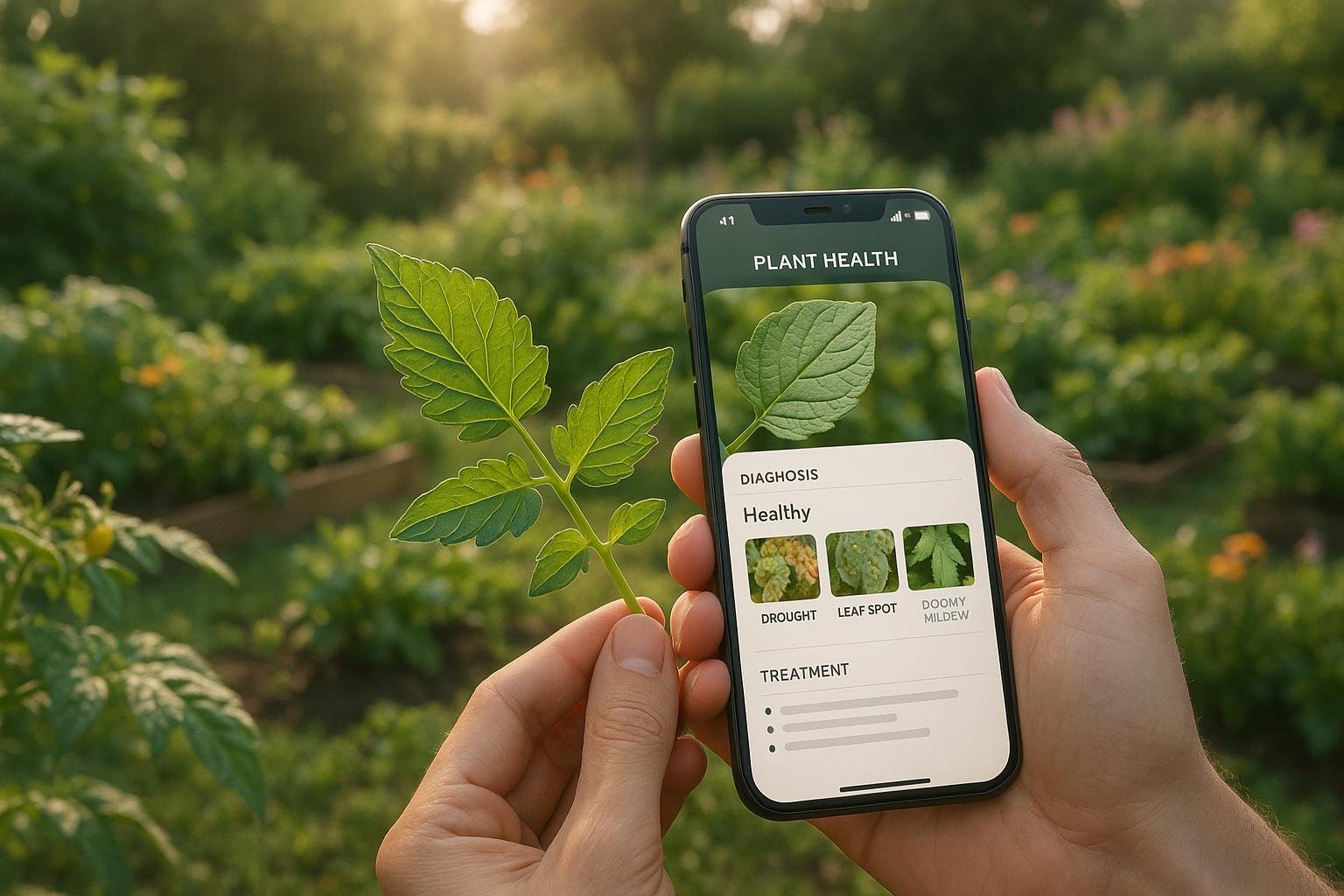
AI gardening apps are transforming plant care by detecting and preventing diseases with over 90% accuracy. These tools analyze plant images, weather, and soil data to identify issues early and even predict potential outbreaks. Here's what they offer:
- Quick Disease Detection: Snap a photo, and the app identifies diseases in seconds with 90-99% accuracy.
- Custom Solutions: Receive tailored treatment recommendations based on plant type, disease severity, and local conditions.
- Early Warnings: Predict diseases like powdery mildew or late blight up to 10 days before symptoms appear.
- Reduced Chemical Use: Targeted advice minimizes pesticide use by 20-40%.
- Continuous Learning: Apps improve over time as users share data, refining predictions and recommendations.
These AI tools save time, cut costs, and help gardeners maintain healthy plants while reducing environmental impact.
Want to know how they work? Read on to learn about the technology behind these apps and how they’re reshaping gardening for everyone.
Build a Plant Disease Detection & Analyzer App with Google's Gemini Pro Vision + Gradio|Full Project

How AI Apps Detect and Identify Garden Diseases
AI-powered gardening apps work like digital plant doctors, identifying diseases that might otherwise go unnoticed. These apps analyze plant images using advanced algorithms, often catching early signs of trouble before visible symptoms even appear.
Machine Learning and Image Analysis
AI disease detection relies on image recognition to examine plant photos for signs like discoloration, unusual spots, or texture changes - early indicators of disease. These systems are trained on massive databases containing thousands of labeled plant images, enabling them to detect subtle differences that might escape the human eye.
The process starts with feature extraction, where algorithms break down raw image data into specific traits like shape, color, and texture. Machine learning models then classify the plant as healthy or diseased based on these characteristics.
Thanks to cloud-based APIs, this technology is now easily accessible via smartphones. Gardeners can simply snap a photo of their plant, and the app quickly analyzes it for signs of pests or diseases.
One real-world example comes from research on chili pepper diseases. A convolutional neural network (CNN) trained for this purpose achieved an impressive 98.63% accuracy without data augmentation, and 99.12% with it.
Beyond analyzing single images, AI systems refine their diagnosis by incorporating data from various sources to pinpoint the exact type of disease.
Differentiating Disease Types and Causes
AI systems go beyond identifying whether a plant is diseased - they can distinguish between different types of problems. They achieve this by analyzing not just the plant's appearance but also external factors like weather, geographic data, and environmental conditions. This allows the technology to differentiate between diseases caused by pathogens and those stemming from environmental stressors.
When assessing plant symptoms, AI algorithms focus on details such as the shape, color, texture, and patterns on leaves or stems. These visual cues are compared against extensive databases of labeled images using deep learning techniques.
For even greater precision, AI systems integrate metadata like GPS coordinates and timestamps. For example, they’ve been used to identify major agricultural pests, such as the pink bollworm in cotton fields across Maharashtra, India, and the brown plant hopper in rice crops in Telangana, India.
By combining visual symptoms with location and weather data, AI delivers more accurate diagnoses. When image analysis isn't enough to provide a clear answer, some apps even ask targeted follow-up questions to help growers narrow down the issue.
While human experts typically achieve a 60–70% accuracy rate in diagnosing plant diseases, advanced AI algorithms often surpass 90%.
How AI Systems Learn and Improve
AI systems don’t just stop at initial detection - they continuously get better over time. Through deep learning techniques, these systems refine their accuracy by analyzing large datasets and automating feature extraction. Convolutional Neural Networks (CNNs) are particularly effective at handling complex data, enabling the automation of tasks once done manually.
Techniques like transfer learning and ensemble methods make these systems even more robust. They allow AI to apply knowledge from one type of plant disease to recognize similar patterns in other crops or conditions. Data augmentation also plays a key role by artificially expanding training datasets, reducing reliance on large, labeled collections while improving accuracy.
"Deep learning models provide unparalleled accuracy and speed in detecting leaf diseases. By deploying these models in tropical agriculture, we can significantly enhance crop management, reduce labor costs, and promote sustainable farming practices." – Huang Mengxing, Lead Researcher
Deep learning models often achieve recognition accuracies above 90%, with specialized models reaching over 99%. For instance, Deep Belief Networks (DBNs) have achieved 96–97.5% accuracy in classifying plant disease images, while deep CNNs hit 99–99.2%.
A notable example from 2017 highlights how these systems evolve. Researchers trained a CNN to generate heatmaps showing infection probabilities across different areas of maize disease images. This system reached 96.7% accuracy on test datasets and could classify diseases in seconds.
AI systems also improve their ability to focus on actual disease sites, even in challenging conditions like shadows or low lighting. This ongoing refinement ensures gardeners receive increasingly accurate and reliable insights to manage pests and diseases effectively.
How AI Predicts Garden Diseases Before They Happen
AI gardening apps have evolved beyond identifying existing plant diseases - they now predict potential outbreaks, allowing gardeners to take action before problems arise. These tools rely on advanced forecasting techniques and data analysis to keep gardens healthy and thriving.
Using Weather and Climate Data
AI-powered gardening tools use detailed weather data to monitor conditions that might lead to disease outbreaks. Equipped with microclimate sensors, these systems track humidity, temperature, and dew point across different zones of your garden.
By detecting subtle environmental shifts, these tools can alert gardeners to high-risk conditions several days in advance - often 3 to 5 days before pathogens take hold. For example, predictive analytics combine historical weather patterns with real-time garden data to anticipate diseases like powdery mildew, late blight, and rust infections up to 10 days ahead. Many platforms even send personalized text alerts when weather conditions become favorable for disease development.
Smart irrigation systems further enhance these capabilities by using soil moisture sensors to optimize watering schedules. This reduces leaf wetness duration by as much as 40% compared to traditional irrigation methods, minimizing the risk of disease.
Growing Degree Day (GDD) Calculations
AI systems also use Growing Degree Days (GDD) to predict when plants are most vulnerable to diseases and pests. GDD measures the accumulation of heat above a specific temperature threshold, which helps estimate plant and pest development stages.
"Growing degree days (GDD), or heat units, are used to estimate the growth and development of certain crops and pests during the growing season." - Zachary Curtis, Extension Educator, Agronomy
By integrating GDD data with weather and climate information, AI tools can forecast the timing of critical growth stages, enabling gardeners to intervene at just the right moment. These calculations vary depending on the plant or pest, as each has unique temperature requirements for development. AI models incorporate GDD alongside other environmental data to deliver a comprehensive risk assessment for disease or pest outbreaks.
For instance, researchers have developed deep learning models to predict crop conditions using factors like air temperature, humidity, dew point, and CO₂ levels. When tested on crops such as strawberries, peppers, grapes, tomatoes, and paprika, these models achieved an impressive average AUROC of 0.917. This accuracy is vital, as diseases like powdery mildew can cause up to 70% yield loss in strawberries, while gray mold can damage 15–20% of the crop - or even exceed 50% in severe cases.
Disease Risk Modeling
AI-driven disease risk models take prediction a step further by analyzing multiple data streams with machine learning. These models generate continuous risk scores, helping gardeners monitor the progression from healthy to potentially infested conditions. Factors like temperature, humidity, and precipitation play a significant role in these calculations.
The precision of these systems often surpasses human capabilities. For example, convolutional neural networks (CNNs) can achieve 95–99% accuracy in identifying crop diseases. In one study, a ResNet-50 model reached an impressive 99.5% accuracy in detecting crop diseases across various configurations.
By integrating these predictive models into garden management platforms, users can reduce disease incidence by up to 60% through timely interventions. The systems process vast amounts of data in real time, creating detailed risk assessments that guide gardeners toward effective preventative measures.
"AI crop disease diagnosis provides comprehensive oversight more frequently and accurately." - Zac Amos, Rehack
These models excel at identifying specific diseases, such as leaf mold, spider mites, verticillium wilt, and powdery mildew, with accuracy rates ranging from 87% to 100%. This high level of reliability empowers gardeners to act with confidence, knowing the recommendations are backed by robust data analysis rather than guesswork.
sbb-itb-4d6a8dd
🚀 Ready to Reinvent Your Garden?
Join thousands of homeowners who have transformed their gardens using our AI design tool. Upload one photo to explore endless possibilities.
Get your AI garden designs →Main Features of AI Garden Disease Apps
AI-powered gardening apps are reshaping the way gardeners - both hobbyists and professionals - manage plant health. By combining cutting-edge technologies like machine learning, image recognition, and predictive analytics, these apps offer powerful tools for diagnosing and preventing plant diseases. Here's a closer look at how they make plant care smarter and more efficient.
Quick Disease Identification
With just a smartphone image, AI gardening apps can quickly diagnose plant problems. Some systems can identify over 35,000 plant species and related organisms, while disease detection achieves an impressive accuracy rate of around 90%. These apps analyze key plant features and cross-reference them with extensive databases containing up to 100 diseases. They even account for factors like the affected plant parts, geographic location, and weather conditions to differentiate between similar symptoms. This level of precision helps prevent costly misdiagnoses that, in the past, have led to yield losses as high as 40%. By providing instant results, gardeners can take action immediately, protecting their plants from further harm.
Custom Treatment Recommendations
Once a disease is identified, these apps go a step further by offering tailored treatment advice. Recommendations are customized based on the plant type, the severity of the disease, local climate conditions, and available treatment options. Many apps emphasize biological and organic solutions, refining their guidance through user feedback. By enabling location services, gardeners receive advice specific to their region, accounting for local pathogen resistance patterns and climate trends. Users can also enhance accuracy by providing additional symptom details, such as wilting, unusual odors, or the speed of disease progression. Over time, machine learning algorithms incorporate successful treatment outcomes, creating a feedback loop that improves future recommendations.
Early Warning Systems
One of the standout features of these apps is their ability to predict problems before they become visible. Using real-time sensor data, they generate health dashboards that compare environmental conditions against disease risk models. Predictive analytics can forecast outbreaks of diseases like powdery mildew, late blight, and rust up to 10 days before symptoms appear, sending gardeners customized alerts when conditions are ripe for infection. Micro-climate monitors further enhance these predictions by tracking hyperlocal changes in humidity, temperature, and dew point, alerting users to high-risk conditions 3–5 days before pathogens can take hold. These advanced tools have been shown to reduce disease incidents by up to 60%, forecast outbreaks with up to 85% accuracy, and achieve disease recognition rates as high as 98%. By shifting the focus from reactive to proactive care, these systems empower gardeners to take preventative measures - adjusting irrigation schedules, applying treatments, and addressing risks before they escalate.
How Gardeners Use AI Disease Prediction Tools
AI disease prediction tools are changing the way gardeners care for their plants. By shifting from a reactive approach to a proactive one, these tools help both hobbyists and professionals maintain healthier gardens while cutting costs and minimizing environmental impact. With early warnings and precise interventions, gardeners can tackle potential issues before they spiral out of control.
Preventing Garden Problems Before They Start
AI-powered tools can detect problems long before they become visible to the naked eye. By simply snapping photos of plants and uploading them to AI-driven apps, gardeners receive early warnings about developing issues lurking beneath the surface.
Smart sensors scattered throughout the garden play a key role, constantly collecting data on factors like temperature, humidity, and soil moisture. This data feeds into AI systems that analyze both historical trends and real-time conditions to anticipate disease outbreaks. For instance, FarmSense, a California-based startup, uses vineyard sensors to monitor leaf moisture and environmental conditions. Their AI system predicts diseases such as powdery mildew, enabling farmers to apply precise treatments before symptoms even appear.
When high-risk conditions are flagged, gardeners can make timely adjustments - whether that means tweaking watering schedules, improving air circulation, or applying preventative treatments. These proactive steps can stop small issues from turning into major problems.
Community networks built into these apps also boost prevention efforts. If one gardener reports a disease outbreak, the system alerts nearby users to be on the lookout for similar issues, helping entire neighborhoods stay ahead of seasonal challenges.
Using Fewer Chemicals
Early detection doesn’t just save plants - it also reduces the need for chemical treatments. Instead of relying on routine, broad-spectrum applications, AI tools provide precise, timely recommendations. Farmers using these systems have reported cutting pesticide use by 20–40%. By pinpointing specific pathogens, these tools suggest targeted solutions, often favoring biological or organic options that are effective yet less harmful.
AI systems may also recommend natural methods, like companion planting, improved drainage, or organic treatments that address the root causes of diseases rather than just masking the symptoms. This approach supports long-term garden health while minimizing chemical dependency.
Getting Better Results Over Time
The longer gardeners use these tools, the better the results become. Over time, a feedback loop develops: as gardeners input more data about their plants, growing conditions, and treatment outcomes, the AI refines its predictions and recommendations. This ongoing process enhances both the tool’s accuracy and the gardener’s expertise.
With consistent use, AI systems can identify patterns unique to each garden. For example, they might reveal that certain spots are more prone to disease or how localized weather impacts plant health. By integrating data from various sources - like soil sensors, weather stations, and plant monitors - gardeners gain a complete picture of their garden’s health. These insights often uncover connections between environmental factors and plant well-being that might otherwise go unnoticed.
As more gardeners participate, the collective database grows, making community-based alerts even more accurate and timely. This continuous cycle of improvement strengthens the role of AI in helping gardeners predict and prevent diseases, season after season.
Conclusion
AI-powered gardening apps are changing the game when it comes to plant health and disease management. Instead of waiting for problems to arise, these tools help gardeners prevent issues before they even start, creating healthier and more sustainable gardens. By combining machine learning, real-time data analysis, and predictive modeling, these apps deliver insights that were once only available to experts.
"If agriculture is equipped with cost-effective AI tools that can identify crop diseases and pest infestations early in their development, growers and others can catch problems before they take off and cause real damage." - Karen Garrett, Plant Pathologist, University of Florida
These AI systems process an astonishing 250,000 images daily - work that would require hundreds of human experts - and achieve accuracy rates of over 90%. This level of efficiency and precision far outpaces traditional diagnostic methods.
Key Takeaways
Here’s how these tools are making an impact:
-
Predictable disease prevention:
AI uses weather data, soil conditions, and historical trends to predict potential disease outbreaks. This allows gardeners to act early, reducing crop losses that typically account for 30–33% of productivity. -
Improved resource efficiency:
AI-driven irrigation systems can cut water waste by up to 50%, and precise disease detection minimizes the use of unnecessary chemicals. These improvements save money and are better for the environment. -
Expert-level insights for everyone:
With accuracy rates exceeding 90%, these apps turn complex plant health data into easy-to-follow recommendations, making professional-grade diagnostics available to all. -
Continuous learning for better results:
As more people use these apps and share their data, the systems get smarter and adapt to local conditions, creating a feedback loop that benefits all users.
"AI simply provides additional tools to help make informed decisions and optimize our efforts." - Dr. Chrissann Ruehle, DBA, MBA, CPM, AI Consultant and Strategist, & Management Faculty at Florida Gulf Coast University
FAQs
How do AI gardening apps tell the difference between diseases caused by pathogens and those caused by environmental factors?
AI gardening apps leverage image recognition and data analysis to pinpoint whether a plant's issues stem from pathogens like fungi or bacteria, or from environmental factors such as drought or poor soil quality. By examining plant images alongside sensor data - such as temperature, humidity, and soil moisture - they can detect patterns that reveal the root causes of plant stress.
These apps go a step further by comparing current data with historical disease trends, enabling them to predict outbreaks when conditions favor pathogen growth. At the same time, they can identify signs of environmental challenges, like nutrient shortages or harsh weather. This blend of real-time monitoring and machine learning empowers gardeners to take precise, timely actions to maintain their plants' health.
How does weather and climate data help AI apps predict garden diseases?
Weather and climate play a key role in helping AI-powered apps predict garden diseases by analyzing the conditions that affect plant health. Elements like temperature, humidity, and rainfall patterns are closely monitored to pinpoint situations that might encourage disease outbreaks. For instance, higher temperatures can speed up the growth of some pathogens, making plants more vulnerable to infections.
By merging real-time weather data with historical climate records, these apps can anticipate potential risks and recommend precautionary measures. This forward-thinking method helps gardeners safeguard their plants and keep their gardens thriving before issues take hold.
How do AI-powered apps get better at identifying garden diseases over time?
AI-powered gardening apps are getting smarter at spotting plant diseases, thanks to their ability to learn continuously. These apps rely on machine learning algorithms trained with extensive image libraries showcasing different disease symptoms. As they encounter new data - like photos of rare diseases or unusual symptom patterns - they fine-tune their models, improving both accuracy and reliability.
This constant learning helps the AI tackle fresh challenges, fix earlier errors, and offer sharper diagnoses. For gardeners, this means receiving quick, actionable advice to keep plants healthy, minimize losses, and enhance overall garden care.
🎨 Visualize Your Dream Garden Today!
Transform any outdoor space into a professional landscape design in minutes. Just upload a photo, choose your style, and let our AI do the rest.
Start your garden transformation now →Related posts
Related Articles
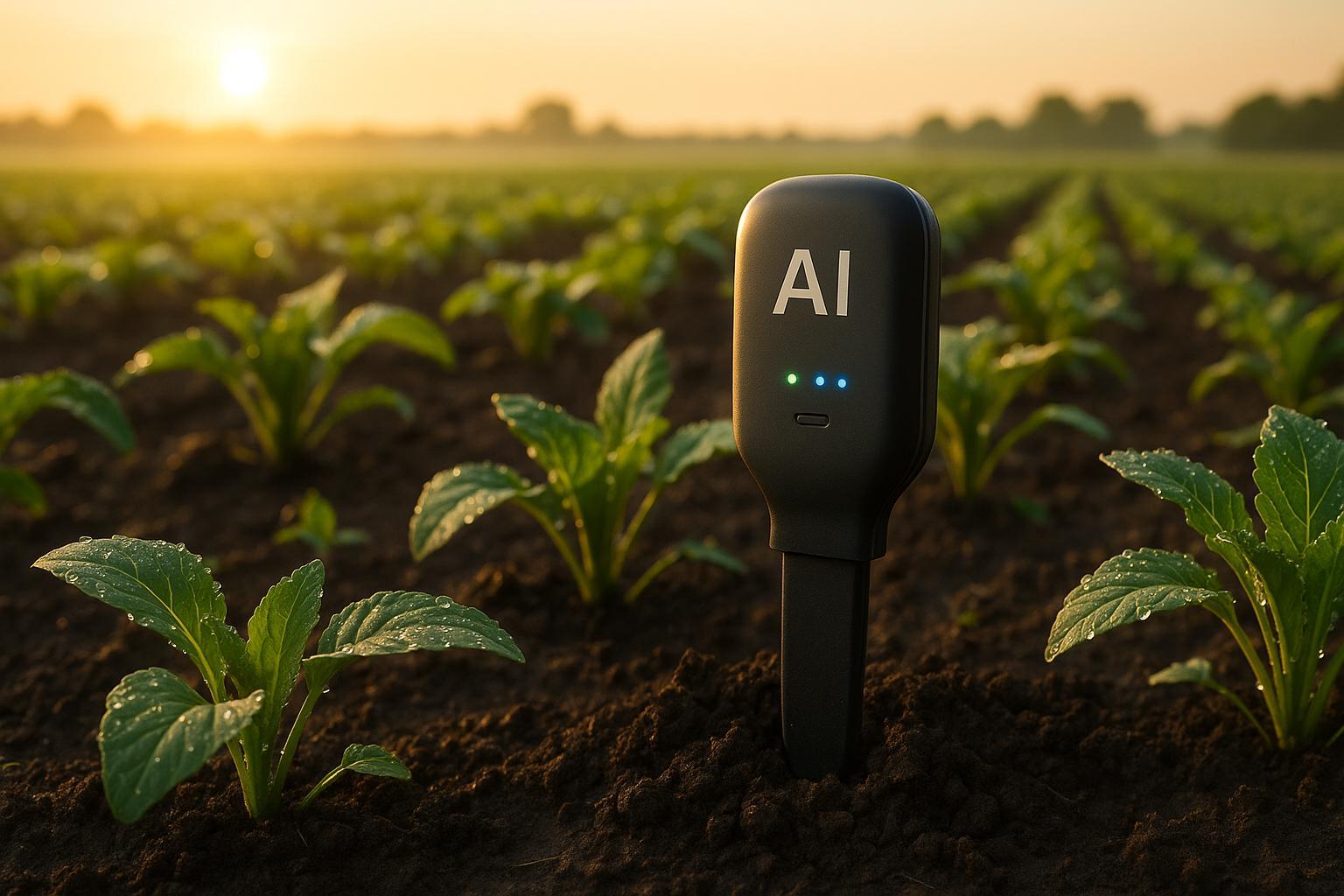
How AI Soil Sensors Monitor Moisture and Nutrients
Explore how AI soil sensors enhance farming efficiency by monitoring moisture and nutrients, optimizing irrigation, and boosting crop yields.
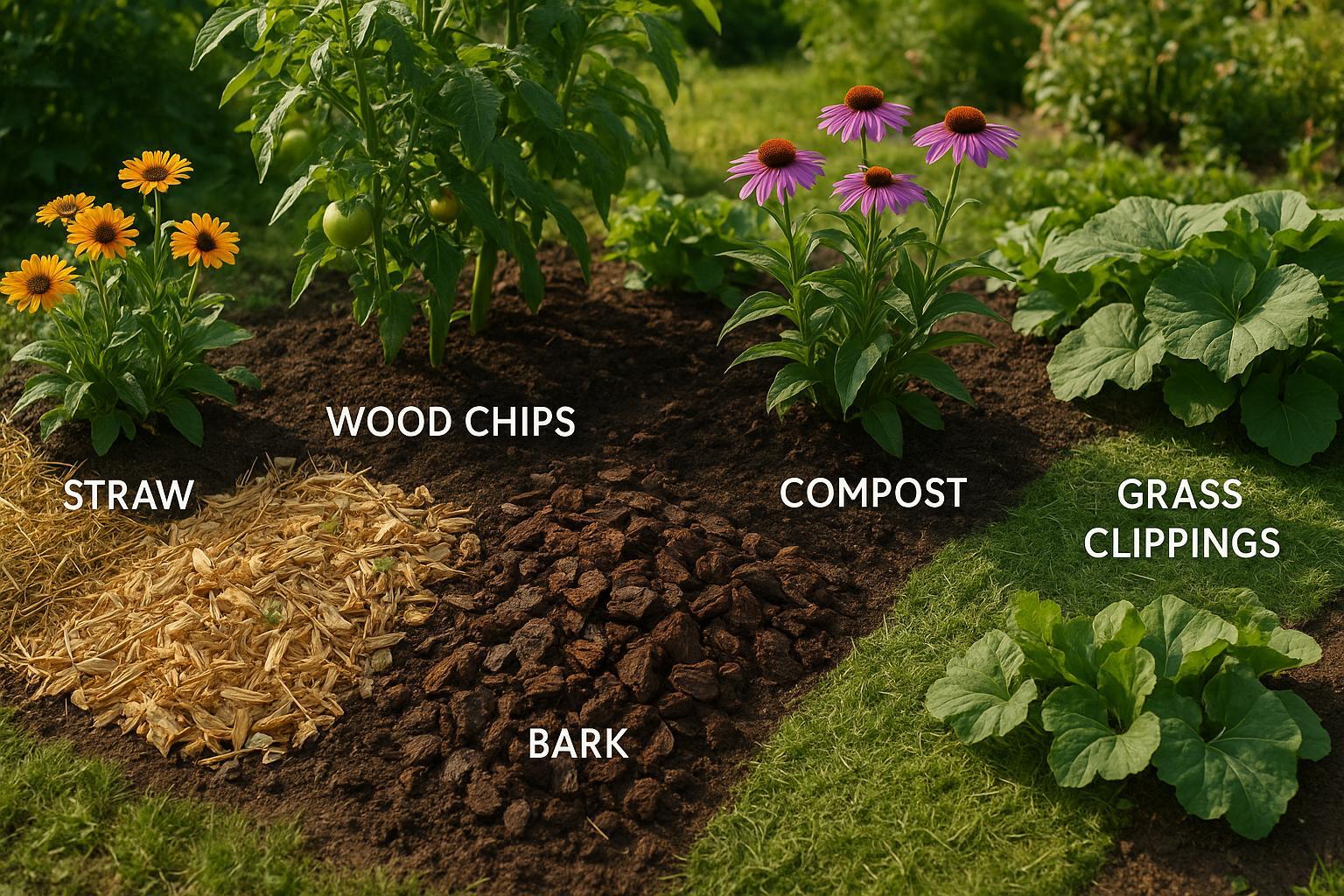
Top 5 Mulch Types for Sustainable Gardening
Explore the top 5 eco-friendly mulch types that enhance garden health, support plants, and promote sustainable gardening practices.
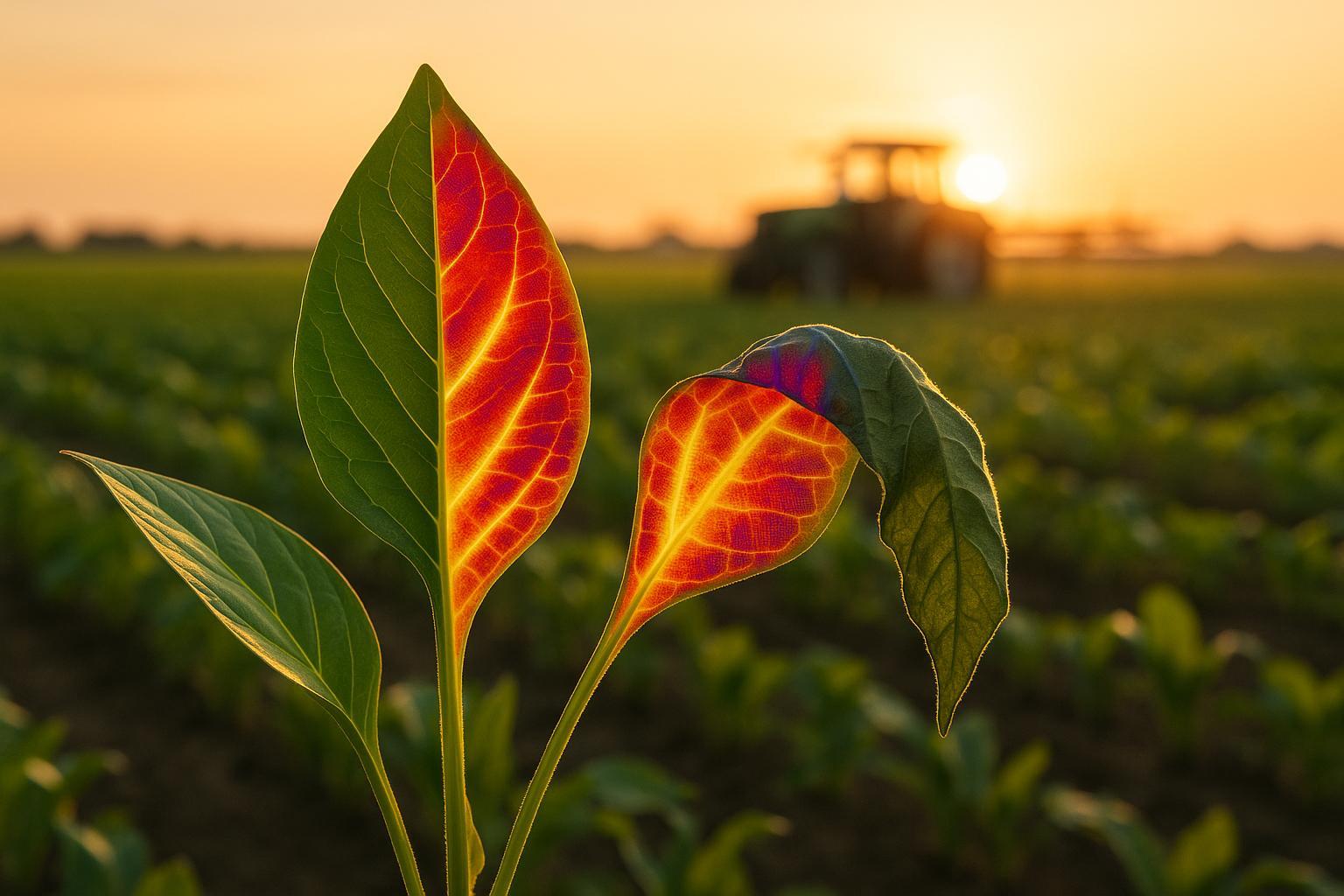
Infrared Imaging for AI Plant Stress Detection
Explore how infrared imaging and AI revolutionize plant stress detection, enabling early interventions and smarter farming practices.
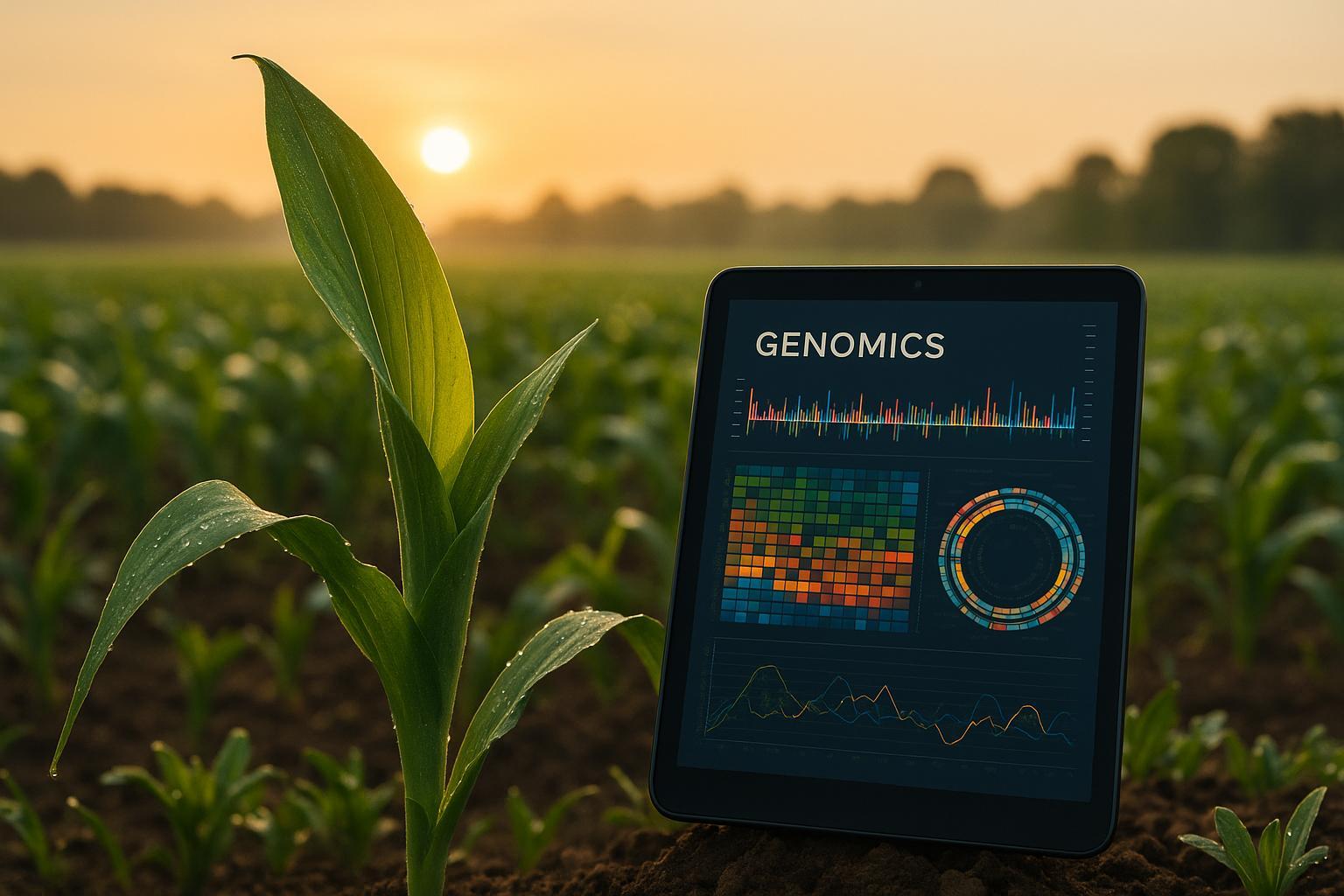
How AI Predicts Plant Disease with Genomics
Explore how AI and genomics are revolutionizing plant disease detection and management, enabling early predictions and sustainable practices.

AI Pest Identification vs. Traditional Methods
Explore how AI pest identification outperforms traditional methods by enhancing accuracy, speed, and environmental sustainability in pest management.
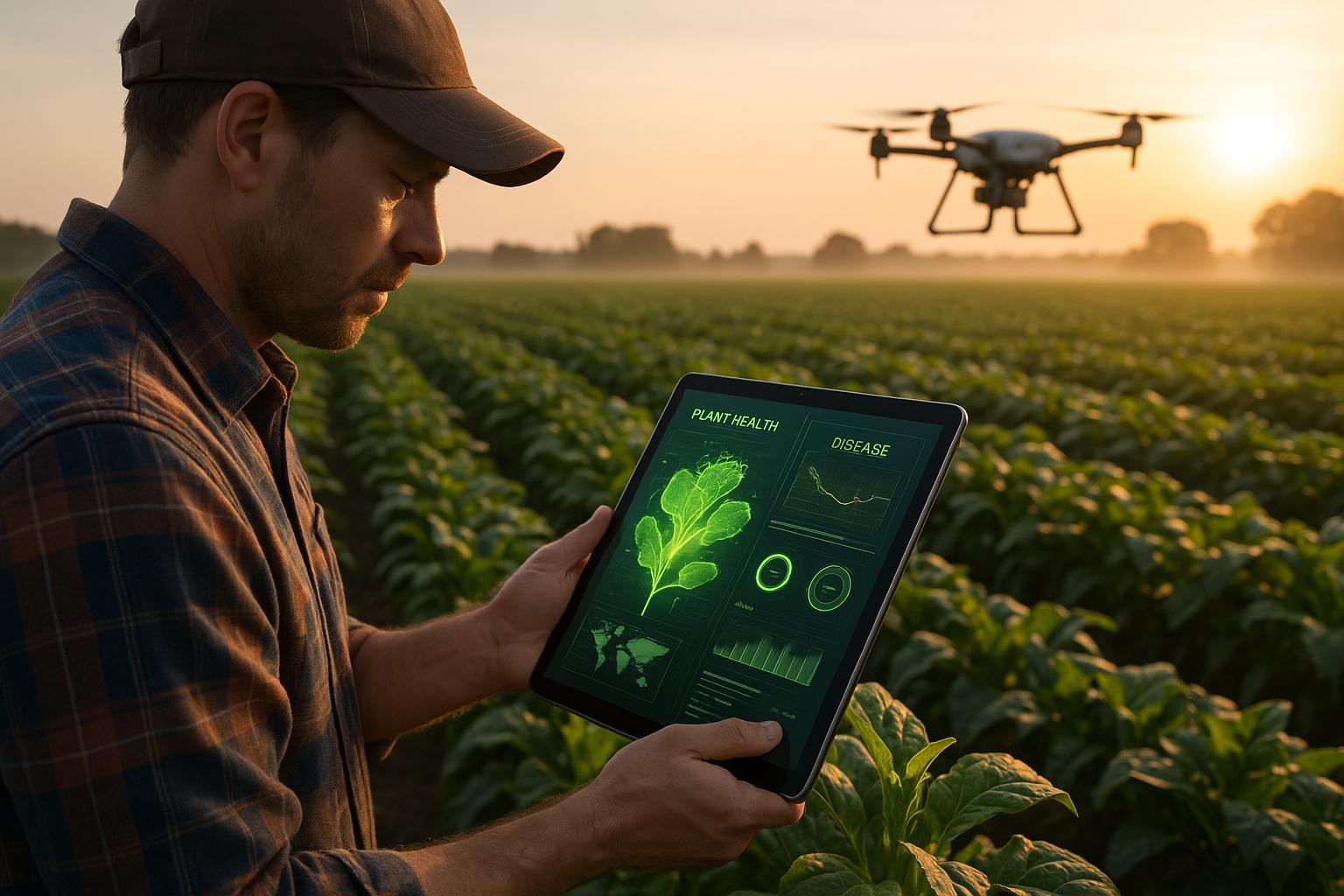
AI Tools for Predicting Plant Disease Outbreaks
AI tools are revolutionizing crop protection by predicting plant diseases accurately and helping farmers increase yields while minimizing pesticide use.